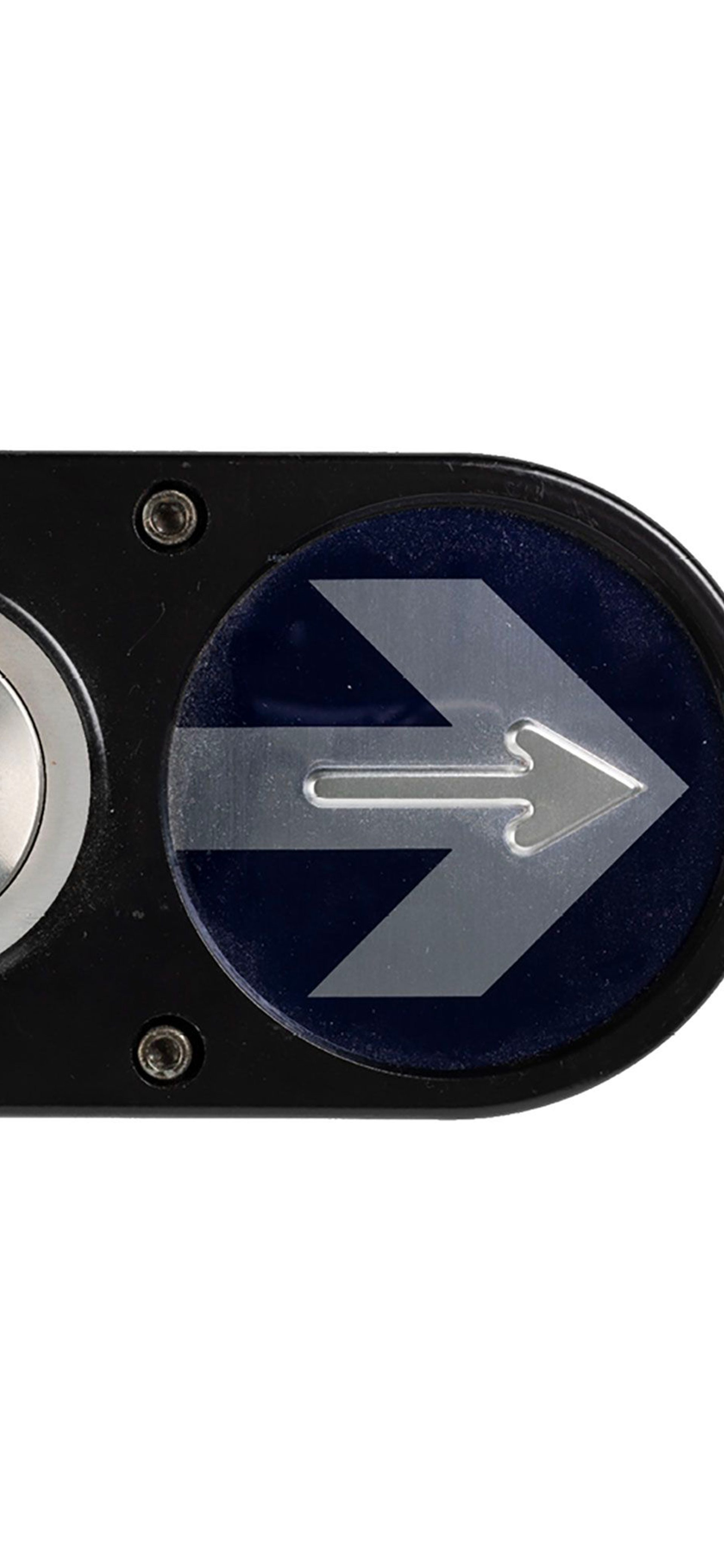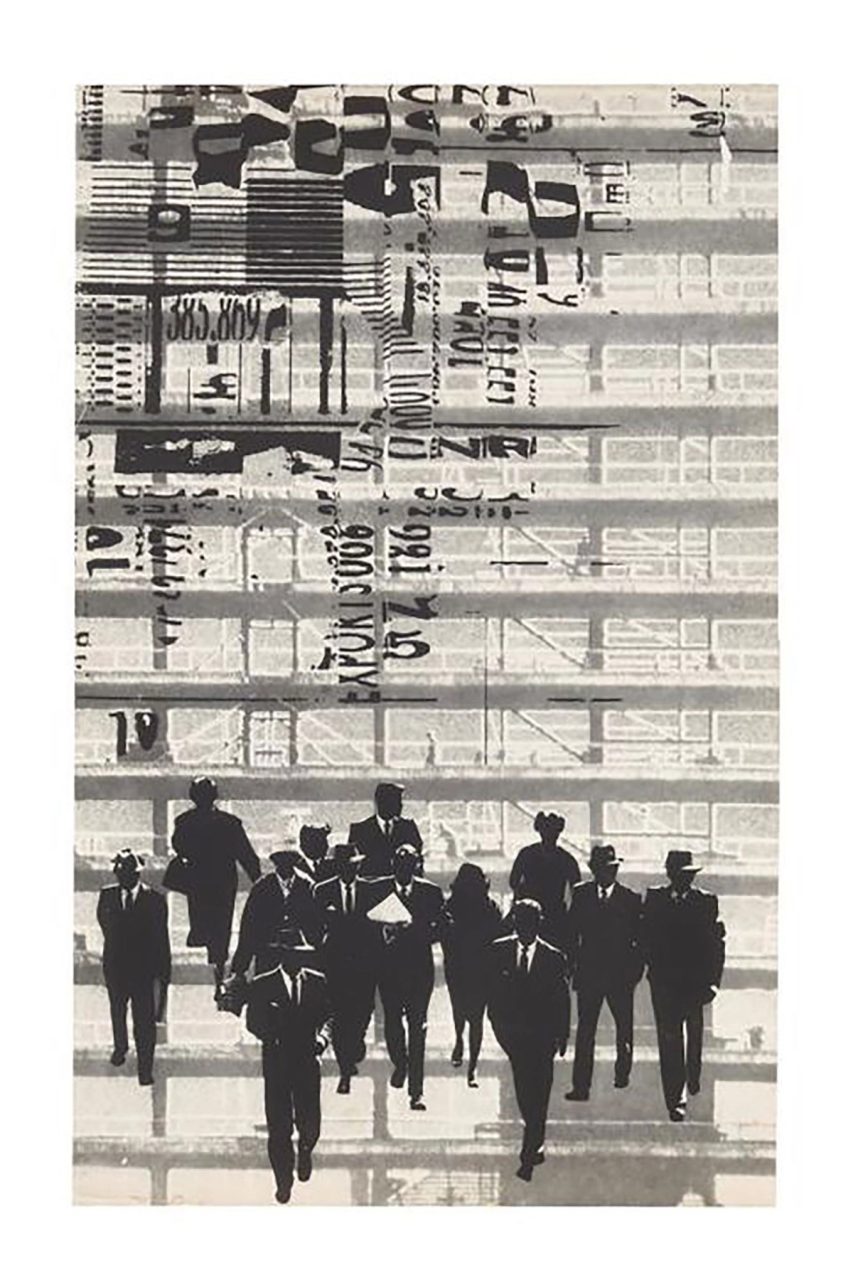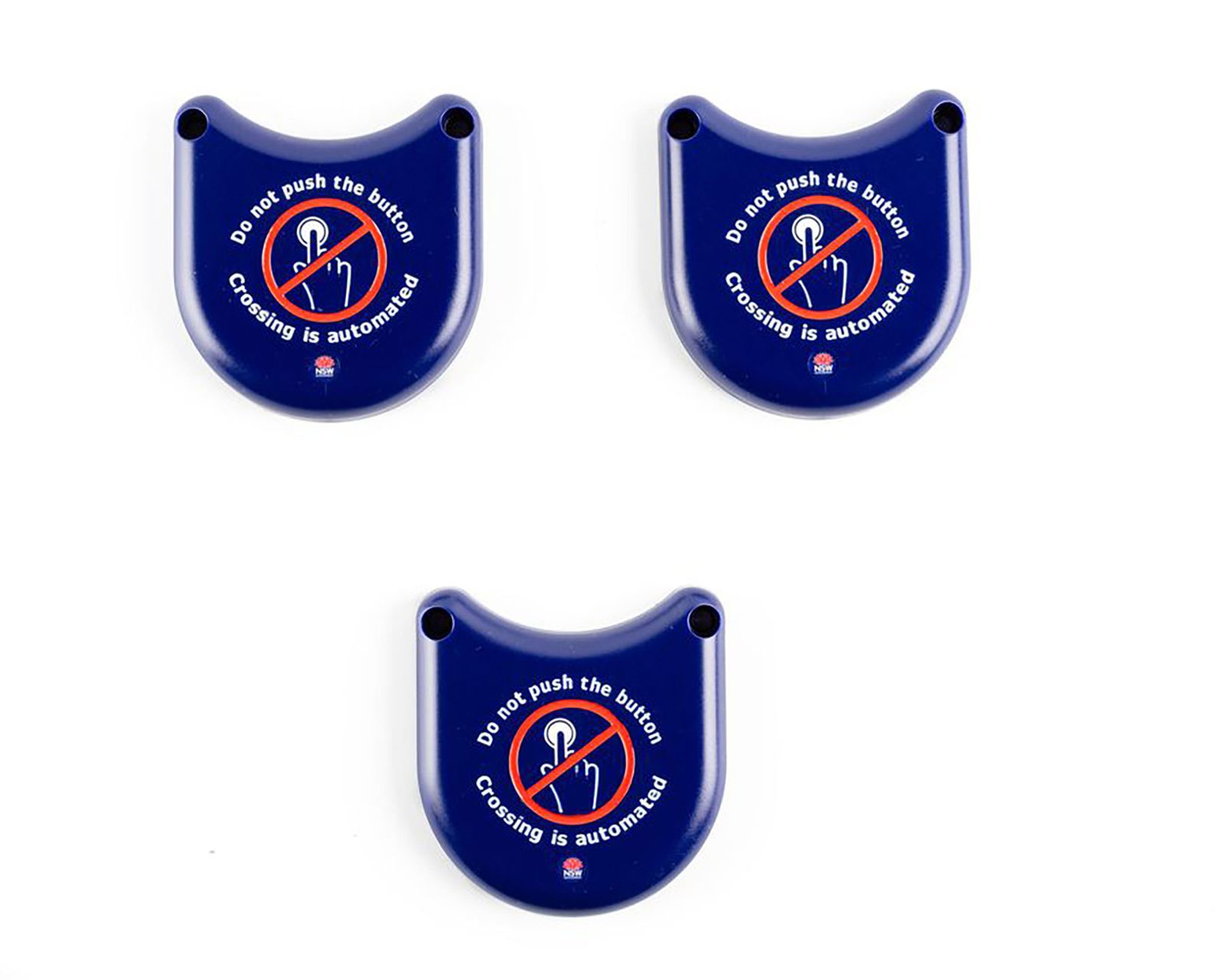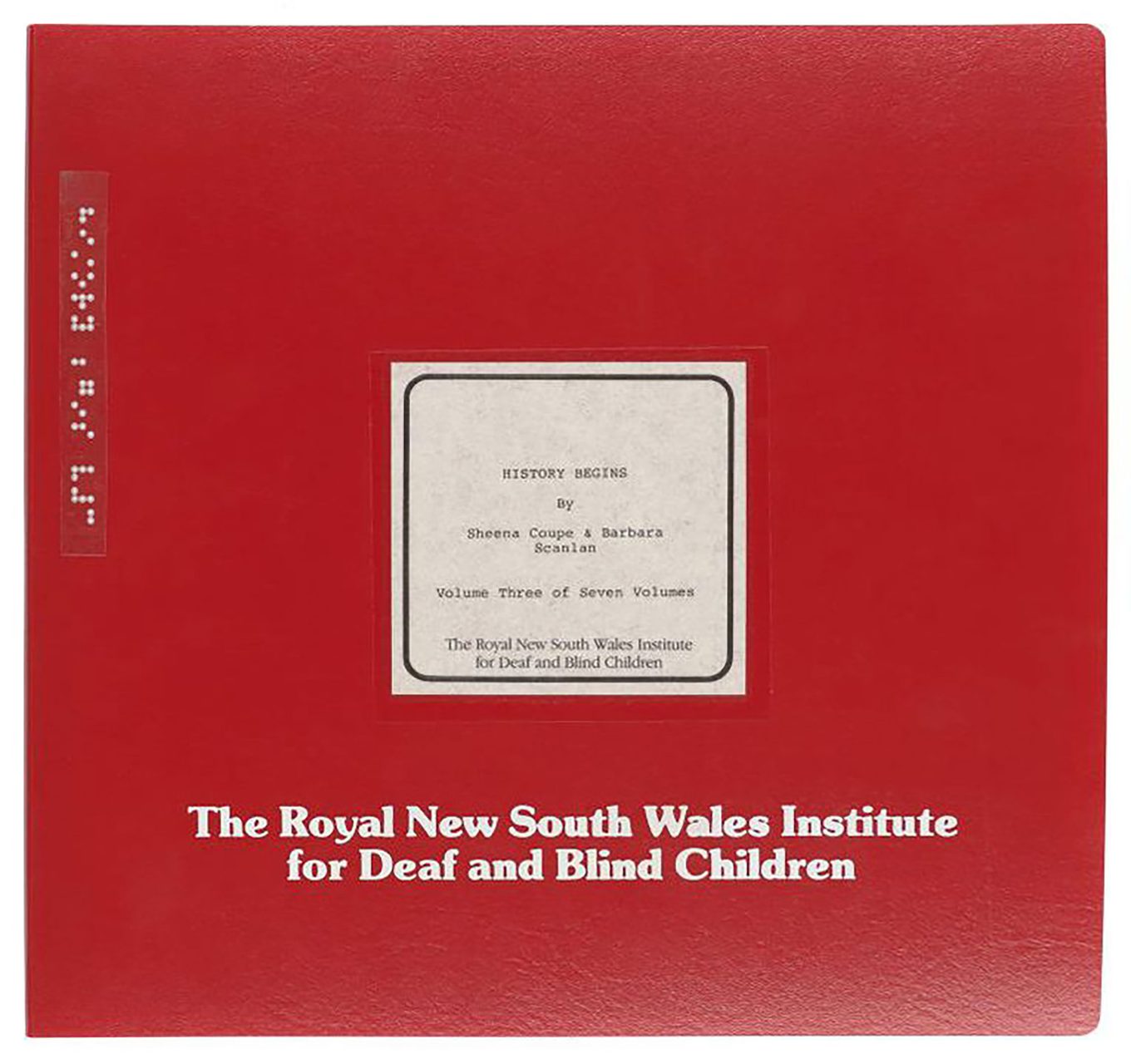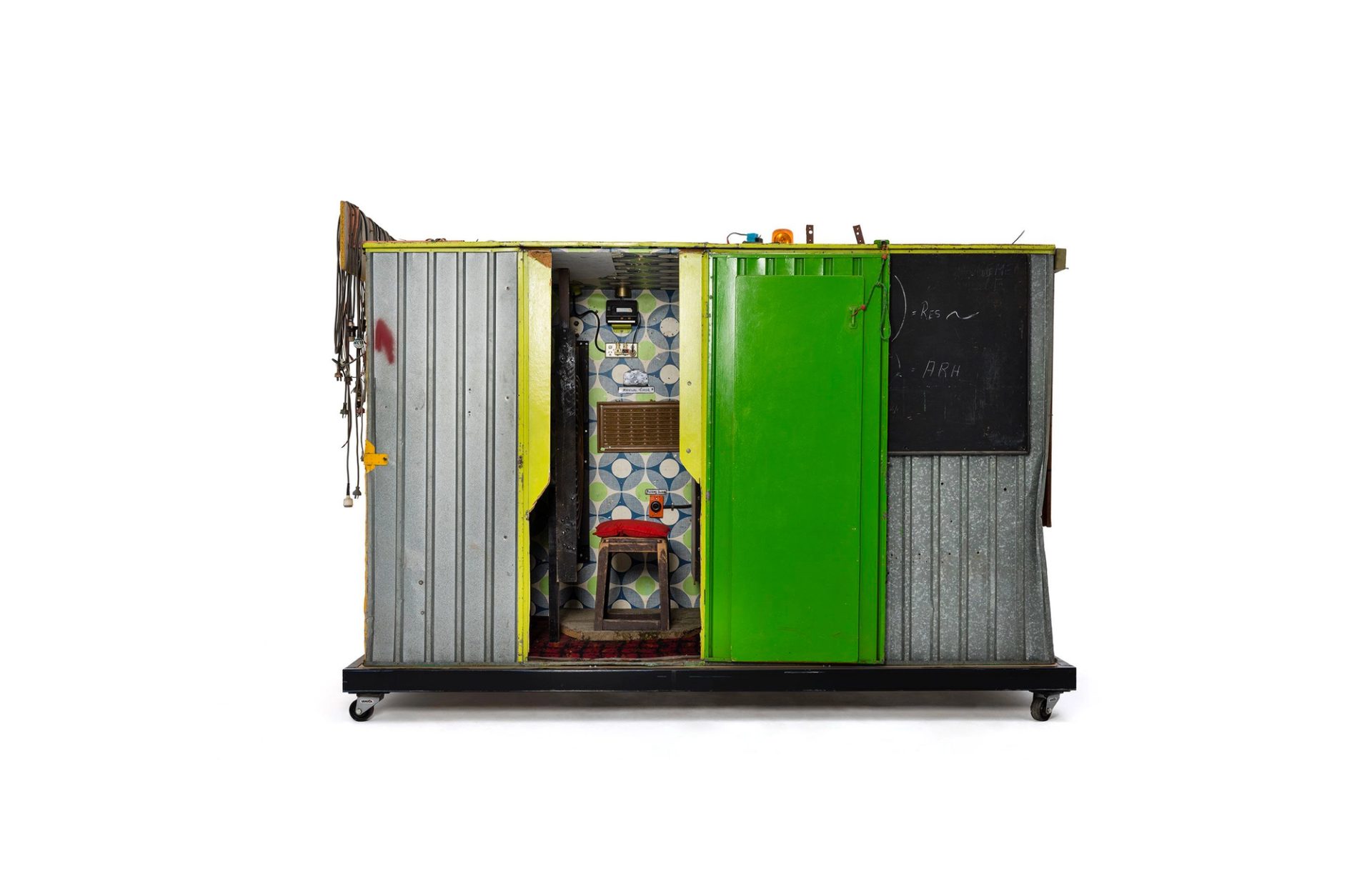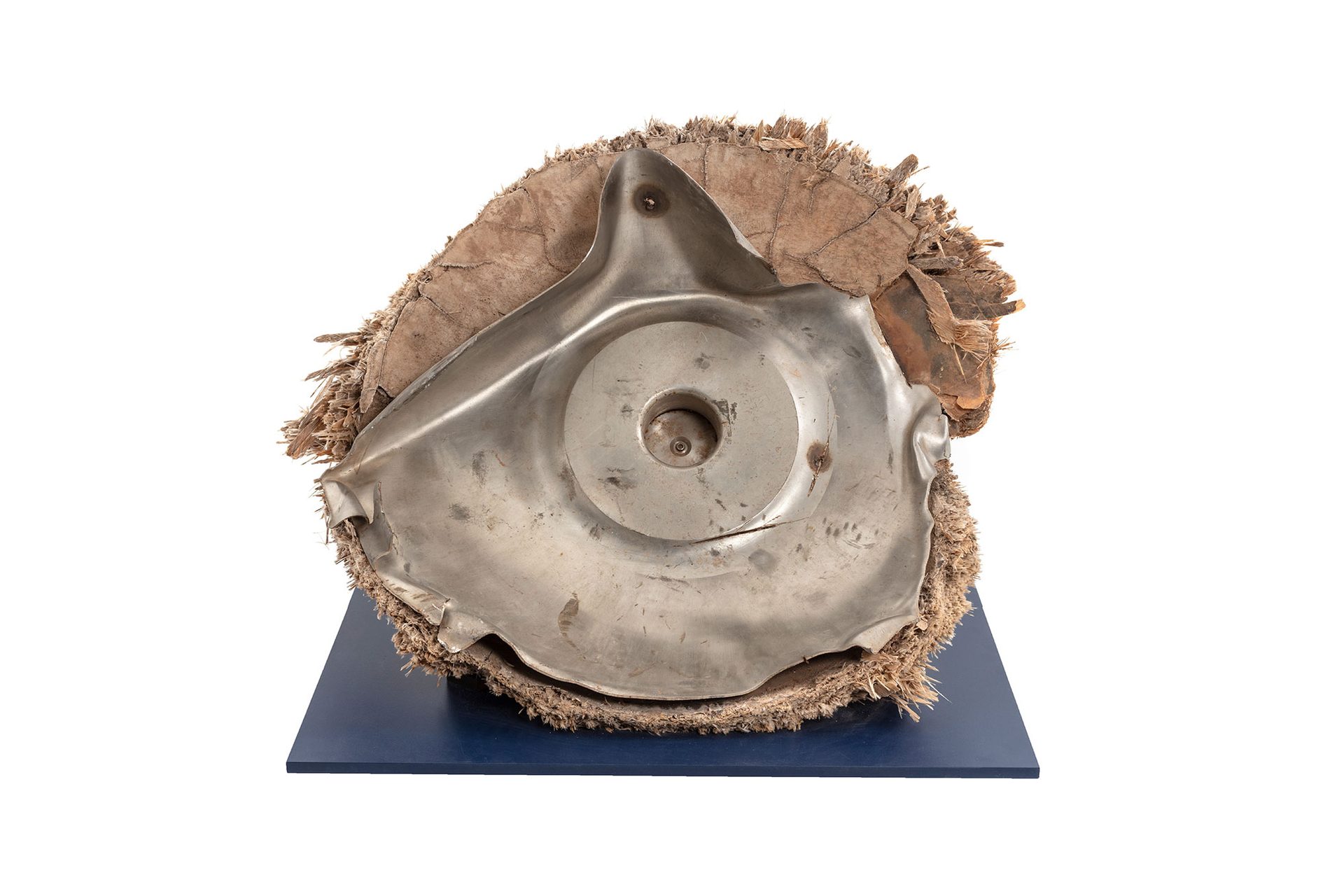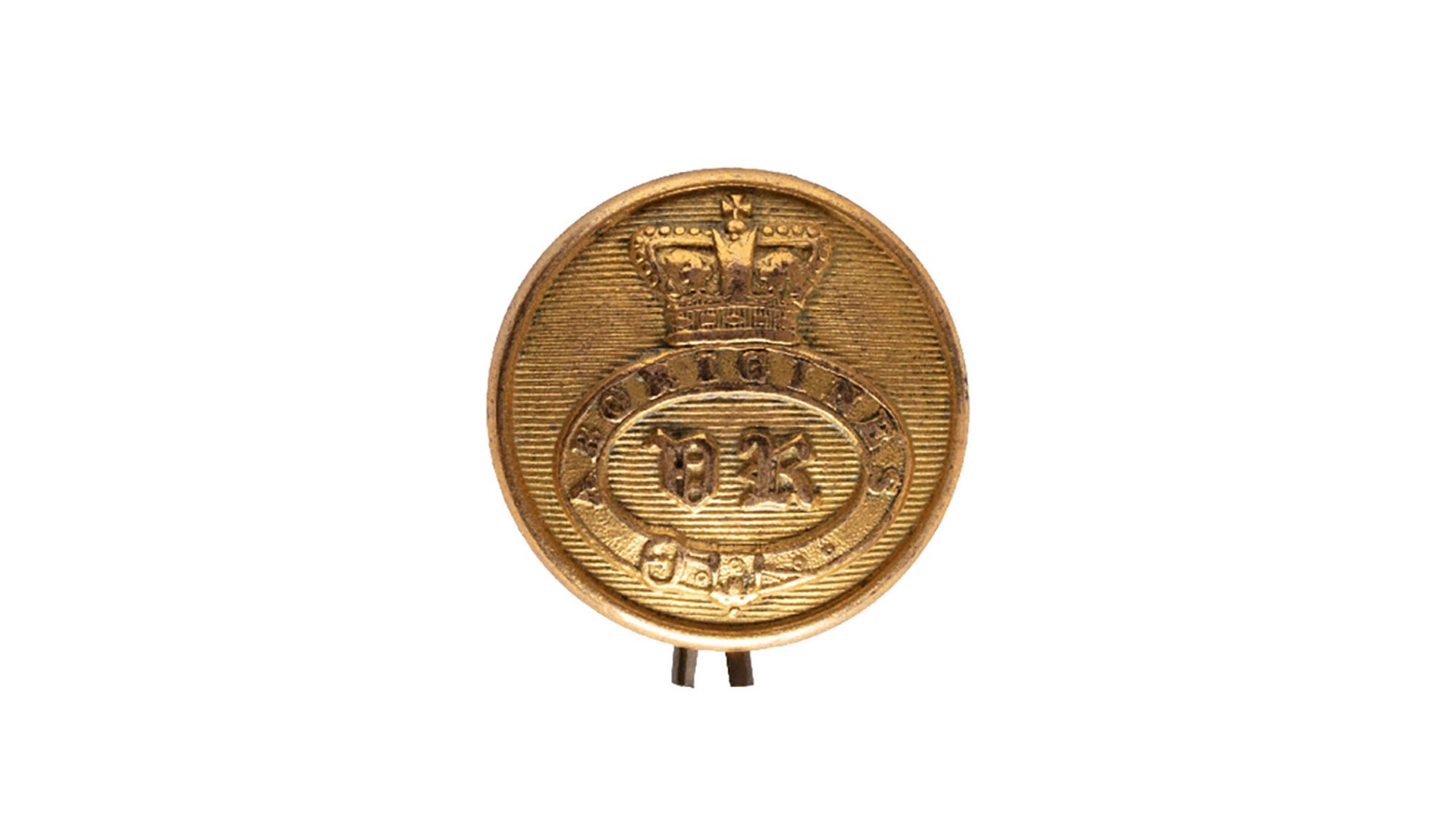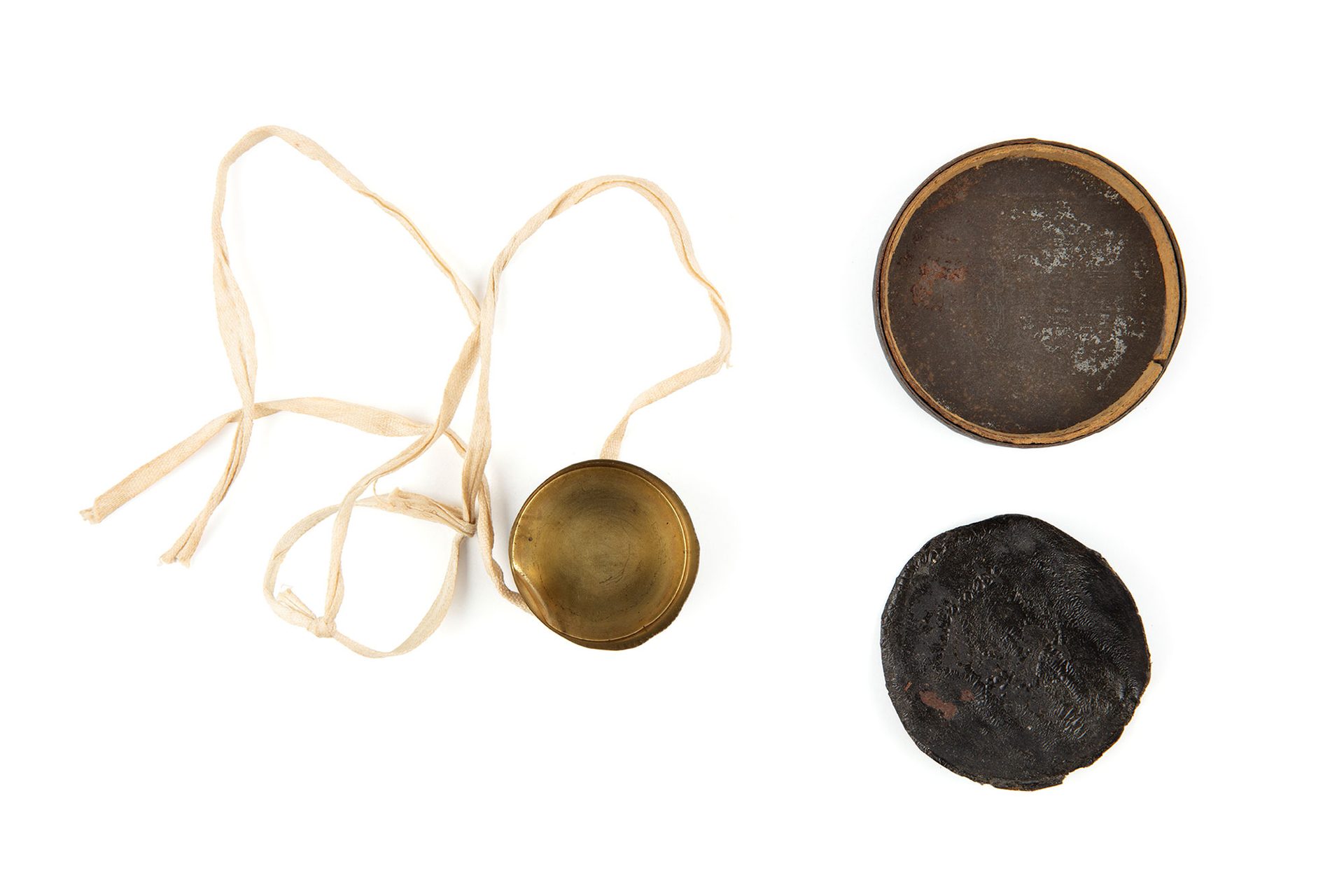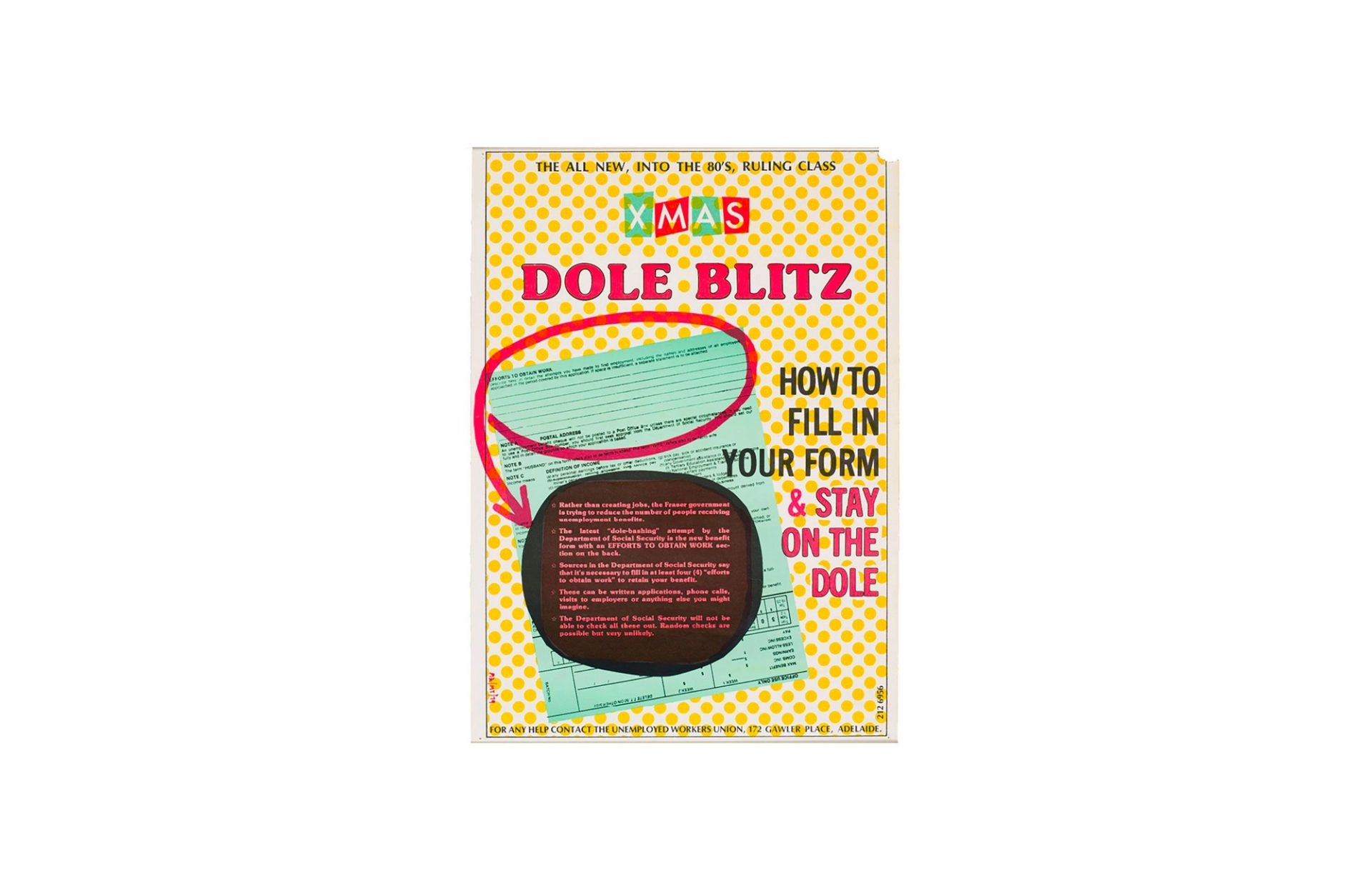Push to Walk

From heartbeats to brainwaves, economic cycles to cosmic orbits, oscillations can be found everywhere. This podcast takes artists and listeners deep into the Powerhouse's collection of half a million objects to unearth stories about the vibrations, fluctuations, and movements woven through our world – and beyond it. The PB/5 pedestrian crossing button is a celebrated icon of Australian design. Its renowned sound became part of an independent movement for social change, and the audio tactile pedestrian button became an irreplaceable feature in our neighbourhoods.
In Push to Walk: A People’s History of the Pedestrian Button, John Jacobs and Jane Curtis find out how the PB/5 pedestrian button came to be a fixture on Australian streets from the people who helped make it happen: engineers, Vision Australia advocates and the blind and vision impaired communities.
‘By 1984, the pedestrian button we know, and love was designed and installed on Sydney streets. The rest of Australia followed and these days it's hard to find a crossing without one.’
Transcript
Bill Jolley Now if you walk around Australia and you come up to a pedestrian crossing in Sydney, Melbourne or most other cities, you'll come up to a pedestrian crossing that goes beep, beep, beep, beep.
Graham Innis You don't just use those signals to tell you when to cross the road. As a blind person, you also use them to keep in your mind where it is that you're going.
Susan Thompson I tend to get as close to the middle of the corner as I can. Then I'll turn and try and zero in on where the sounds coming from.
BJ Beep, beep, beep.
ST They act as a, almost like a propellant for some people to cross the road. So, if someone's standing looking at their phone, they hear the lights go bebebebebebebep and they suddenly realise it. It's actually time to cross.
Narrator If you're in Australia or you've been here, you know this sound. The sound of Powerhouse museum object number 87 slash 234 dash 1. The audio tactile pedestrian button or PB-5 for short.
‘This humble, hardworking button is a big deal. It's Australian made. It's a design icon. It's award winning. It even cracked the top ten. Musician Billie Eilish featured our pedestrian button in her song, Bad Guy.’
Graeme Patterson My name is Graeme Patterson. I was a young engineer working in traffic lights in the early 1970s.
N In those days, the crossing button was on a box that said ‘Pedestrians press button for walk signal’ in all caps. But how would you cross if you couldn't see?
GP When some of these blind pedestrians contacted us saying they've got a big problem crossing, we looked into it and I just thought, well, basically they can't see the light across the other side of the road to see if it’s saying walk or don't walk. But that wasn't the full story. They had problems coming along the footpath finding just when they were at the intersection and then finding which way to cross. Even finding the post which the traffic lights are on. There's a lot of movement, there's other people. It's quite a confusing situation.
N The Powerhouse museum record says, ‘In 1967, a blind man named Cecil McIlwraith asked the New South Wales Roads and Traffic Authority to introduce pedestrian traffic signals he could hear.’
BJ The issue of audible traffic signals was one that was important to him because just in his daily life he could see how it would be helpful to him and to other people.
N That's Bill Jolley, co-chair of Vision Australia.
BJ He used to do fundraising, soliciting donations or ticket selling for the RSL, actually. That meant he was mixing with the public a lot and also that he was travelling independently with his guide dog.
N Bill describes the late Cecil McIlwraith as a visible blind person. Someone who was working in the community with his guide dog. In the 1960s and ‘70s that was less common.
BJ So he'd lost his sight later in life, and he was one of these people that said that the blindness isn't going to stop him. He's not going to go back into his shell.
ST I think he probably came across as a bit of a force to be reckoned with.
N Susan Thompson is an advocacy adviser at Vision Australia.
ST What happens is that, you know, somebody who's got a really persuasive argument and personality and strikes the right person at the right time can really do things. Because sometimes it's about whether your audience is receptive.
N And eventually, Cecil did find a receptive audience for his idea.
‘The idea needs a champion. That is someone who will work for it, do the background work, lead the research, have a dogged determination, and push the idea through their organisation.’
BJ Now, in the case of the audible traffic signals, Frank Hulscher was that champion, and Cecil knew Frank Hulscher and had established a relationship with him.
N Frank Hulscher knew that he had to involve the blind community in the design process. Graeme Patterson.
GP My work supervisor at the time, a man called Frank Hulscher, managed to carry out a survey of most of the people who had vision impairments in New South Wales. We found the majority of them not only had a vision problem, they were often aged, so they had diminished hearing and lesser mobility and it made us think as we were designers, well, what can we do here?
Frank Hulscher And we really found that the best way was to start a research project.
N That's from Frank Hulscher’s oral history.
BJ He said, ‘Louis, I want you to design a system that we can use anywhere.’
N Acoustic engineer, Louis Challis.
BJ And that if the people are blind and deaf, they can find their way across a pedestrian crossing.
FH We came up with the electronic device based on the Swedish technology used actual mechanical tickers – tick, tick, tick, tick, tick, tick, tick, tick – that didn't last very long.
BJ And so, I developed a vibro tactile sound source.
N The new pedestrian button being developed by Frank and Louis wasn't visual. There was no writing or display. Instead, you could hear and feel when it was safe to cross. Bill Jolley.
BJ So, the background work was being carried out. He was starting to get somewhere in developing a final product. Our interest then was to get the audible traffic signals out of his office and off his drawing board and into production.
‘Particularly in those days, there was a lot of things that needed to be done in the world to make life easier for people who are blind or have low vision.’
ST There was a lot of feeling amongst people that everybody had to do their bit.
N So, in 1975, Blind Citizens Australia was formed; the first national grassroots advocacy organisation run by blind people.
ST When I was about 19, which was 1979, just to give my age away, I first got involved with Blind Citizens Australia.
N Susan Thompson remembers her first meeting.
ST I walked into this, what for me was a darkish room at the time as I was just gradually losing vision. There was a number of older people, middle aged men sitting around before the meeting, most of them before and during the meeting had earphones in their ear, connected to transistor radios in their pockets. So, they were kind of half listening to the football and the cricket and whatever was on at the time, scores. Cecil McIlwraith was one of those, but there were a number of other people of his vintage. I was thinking, oh my God, what have I walked into?
N At that meeting, Susan was the odd one out, but she stayed. She wanted to do her bit for social change. And then other young people joined Blind Citizens Australia too.
GI I'm Graham Innes, I'm the former Disability Discrimination Commissioner and I'm totally blind. I've been an advocate in the blindness field since my university years, which were back in the late ‘70s. I remember Cecil. I remember his involvement in Blind Citizens Australia. I recall him as a strong advocate and someone who lobbied hard for issues which impacted on many people who are blind or vision impaired.
N Cecil McIlwraith is the only disability advocate mentioned on the Powerhouse Museum's record for the pedestrian button. But like a lot of social change, it was a group effort.
GI I very clearly remember the campaign because the audible traffic signals were so critical to me and my independent movement around the place. So, I was very keen to see them introduced.
ST This is pre the International Year of People with Disabilities. It was pre the Commonwealth Disability Services Act. It was pre the Disability Discrimination Act.
‘I remember many of us talking, lobbying, writing to politicians.’
GI Any campaign for change always moves very slowly, far more slowly than you'd like it to. Once you see that the benefits, you just obviously want the things to be available and broadly available. But of course, that's not the way these developments work.
BJ What you're doing is you're trying, in fact, to change the status quo.
Archival audio Everybody will ask, what can we do for disabled people? So there really is...
ST The International Year of People with Disabilities in 1981 did start to bring focus more on people with disabilities and the obligation of government to actually cater for people with disabilities and to do things which meant that people with disabilities could live equally in the community with everybody else.
N And in 1991, after a 15 year campaign for traffic signals you could hear, the New South Wales State Government finally delivered. Bill Jolley shared the good news with the blind community.
BJ Okay, so here we go. I'll read it from the braille. During his recent proclamation of October, the 15th as White Cane Safety Day, the Premier of New South Wales, Mr Neville Wran, made an announcement that must surely have been music to the ears of many visually handicapped people. He revealed that the Department of Main Roads, after more than seven years of research and trial installations, has ordered 500 audio tactile devices to be fixed to pedestrian push button assemblies at around 100 sites throughout the state.
N By 1984, the pedestrian button we know and love was designed and installed on Sydney streets. The rest of Australia followed and these days it's hard to find a crossing without one.
GI It's not always been a smooth road. We had the famous situation in Brisbane even up until eight or ten years ago where the traffic lights were turned off at 11 o’clock at night and not turned back on till seven o’clock in the morning.
ST I mean, implicit in that is a sort of an assumption that blind people don't want to travel at night.
GI That was a decision of the Brisbane Council based on the lobbying of people, residents who lived near to the traffic lights who said that the noise kept them awake at night. Well, you know, maybe don't live in a city if you're disturbed by noise like that because buses and garbage trucks and things like that are going to be far more noisy, but you wouldn't take them off the streets.
N So, next time you're waiting at a crossing, scrolling your phone, it'll be this sound that gets you moving. The audio tactile pedestrian button is a classic example of accessible design that benefits everybody.
BJ As a community, we owe Frank Hulscher a great debt of gratitude for the commitment that he showed for the product and the standard to be developed.
N And most importantly, it was the work of blind and vision impaired people like Cecil McIlwraith, Bill Jolley, Susan Thompson and Graham Innes, working through organisations like Blind Citizens Australia that got the audio tactile pedestrian button on our streets.
ST I think the difference between then and now is what we were talking about then was what we need. What we talk about now is what we have a right to. So, there's a different mindset.
GI Audible traffic signals now play a key role in making navigation easier for people who are blind or vision impaired and are so much the life of our cities these days that they get into movies and TV shows and even the tracks of songs.
About Jane Curtis and John Jacobs
Producer Jane Curtis is an award-winning producer of podcasts and radio documentaries. Her podcast Inner West Icons is a sound-rich, playful tour of Sydney’s inner west.
Sound engineer John Jacobs is an international award-winning ABC sound engineer. He brings sounds and voices together to tell engaging stories with warmth, humour and surprise.










